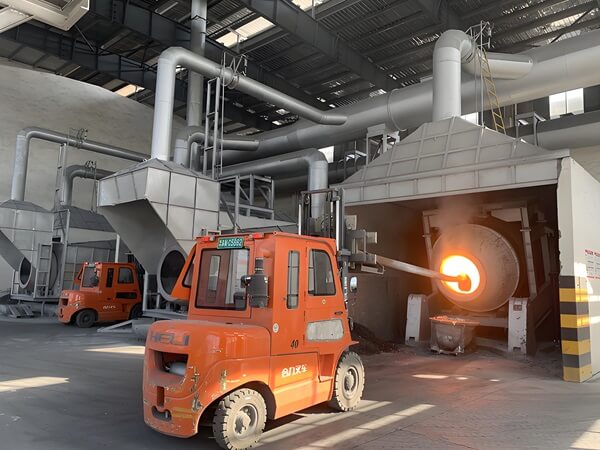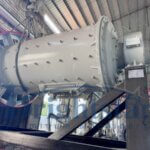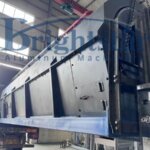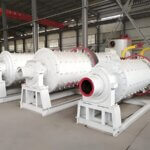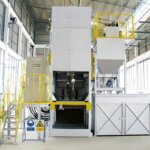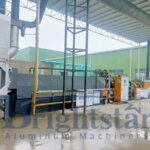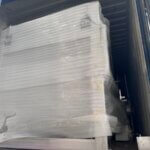Turn aluminum dross into a wonder with aluminum dross processing system
Turn aluminum dross into a wonder with aluminum dross processing system
Transforming Aluminum Dross into a Resource: The Power of the Aluminum Dross Processing System
In the aluminum industry, waste is an inevitable byproduct.
As one of the most widely used metals, aluminum leaves behind a residue known as dross—a byproduct of melting and casting processes.
Dross contains valuable aluminum metal trapped within oxides and other compounds, and despite appearing like waste, this material holds significant potential when processed correctly.
Modern industrial technology has evolved to unlock this potential, allowing industries to transform aluminum dross into a valuable resource.
This transformation not only boosts operational efficiency but also addresses environmental challenges associated with metal waste.
This is where an efficient aluminum dross processing system steps in.
What is Aluminum Dross?
Aluminum dross is a mixture of aluminum oxides, nitrides, carbides, and metallic aluminum produced during the smelting and casting of aluminum.
When molten aluminum comes in contact with oxygen, it forms a layer of aluminum oxide on the surface, trapping bits of pure aluminum beneath.
In many traditional systems, this dross would be discarded as a hazardous waste.
However, it actually contains a substantial amount of recoverable aluminum, typically ranging from 5-75% of the total dross by weight.
To minimize resource wastage and reduce environmental impacts, industries have turned to specialized aluminum dross machines that extract this aluminum and process the remaining residue.
How the Aluminum Dross Processing System Works
The aluminum dross processing system is a comprehensive solution that extracts pure aluminum from dross and processes the remaining materials into harmless byproducts.
The system consists of several steps, each dedicated to different aspects of dross handling and refinement.
Here’s a look into the key components of this system:
1. Aluminum dross machine
The aluminum dross machine is designed to quickly and efficiently extract metallic aluminum from hot dross.
When aluminum dross is removed from a furnace, it remains at a high temperature and contains a mixture of metal and oxides.
The aluminum dross machine rapidly separates metallic aluminum from the dross, maximizing the recovery rate before oxidation can degrade the metal.
By isolating pure aluminum from the dross, the machine reduces the volume of dross needing further treatment.
This minimizes the material sent to subsequent processing stages, streamlining the workflow.
Recovering aluminum directly from hot dross preserves thermal energy, reducing the need for reheating.
This energy efficiency is essential for minimizing operational costs and environmental impact.
2. Aluminum dross cooler
The dross cooler complements the aluminum dross machine by cooling down the dross after the aluminum has been separated.
Aluminum dross, especially immediately after aluminum extraction, is very hot and can be hazardous to handle.
The dross cooler brings the temperature down to safe levels, allowing for safe handling and storage without risks of ignition or chemical reactions.
Cooling the dross quickly helps prevent further oxidation of any remaining metallic aluminum particles, which can still hold some economic value in secondary processing. Reducing oxidation preserves the quality of residual metals.
The cooler conditions the dross, preparing it for further harmless treatment or disposal by bringing it to manageable temperatures.
This is essential for facilities looking to transform residual dross into harmless or usable byproducts.
3. The Aluminum Dross Ball Mill
The aluminum dross ball mill is a crucial component in the processing system, as it grinds dross into fine particles to maximize aluminum recovery.
Grinding breaks down the material and separates metallic aluminum from oxides and other compounds.
By applying significant force, the ball mill liberates the valuable aluminum particles that can then be collected and melted down again.
This method not only increases the yield of aluminum but also minimizes the size of the residual waste.
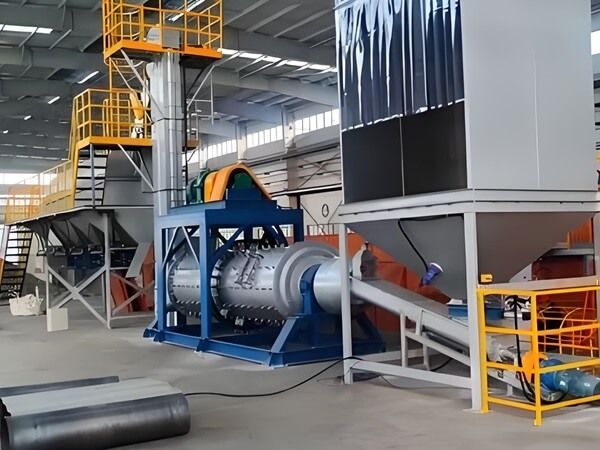
Aluminum dross ball mill and screening machine
4. Aluminum Dross Screening
Once the aluminum dross has been ground, it goes through the aluminum dross screening process.
Screening segregates different particle sizes to facilitate more effective separation of aluminum from non-metallic constituents.
Typically, larger particles contain a higher concentration of metallic aluminum, which can be easily melted and reused.
Fine particles, containing more oxides and impurities, move on to the next stages in the processing line.
5. Aluminum Dross Rotary Furnace
The aluminum dross rotary furnace is used to heat the screened material, allowing remaining metallic aluminum to melt and separate from the dross.
With its rotating motion, this furnace enhances contact between materials and ensures a thorough extraction.
The high temperatures help to recover additional aluminum that may have been missed in the grinding and screening processes.
Rotary furnaces are known for their efficiency and yield, and they play an instrumental role in recycling aluminum from dross.
Environmental and Economic Benefits
Processing aluminum dross has both economic and environmental advantages.
Traditional disposal methods are costly and generate harmful waste that can contaminate soil and water sources.
Using an aluminum dross processing system can mitigate these concerns by reducing the amount of waste that goes into landfills and reclaiming valuable aluminum for further use.
1. Harmless Treatment
The harmless treatment of aluminum dross involves neutralizing any toxic residues left after aluminum extraction.
This treatment can convert waste byproducts into harmless or even useful materials, suitable for use in various industries such as cement production or as additives in construction.
Harmless treatment ensures that no toxic pollutants enter the environment, fulfilling regulatory requirements and minimizing the environmental footprint of aluminum smelting plants.
2. Baghouse Dust Collector
A baghouse dust collector is essential for capturing fine dust particles released during the grinding, screening, and rotary furnace processes.
Aluminum dross contains small particles that can easily become airborne, posing respiratory risks to workers and polluting the surrounding environment.
The baghouse dust collector captures these particles, ensuring a clean and safe working environment.
The collected dust can often be processed further or safely discarded, adding another layer of efficiency and environmental protection.
The Value of Secondary Aluminum Dross
In addition to primary dross, secondary aluminum dross—the residue left after primary aluminum extraction—contains minerals and oxides that have commercial value.
While this secondary dross may no longer contain significant amounts of metallic aluminum, it includes other materials that can be used as additives in cement, as a source of aluminate calcium in construction materials, or even as filler material in different applications.
Processing secondary dross through specialized systems helps industries realize maximum value from every stage of aluminum production.
Enhancing Resource Efficiency and Reducing Costs
The financial benefits of using an aluminum dross processing system are substantial. Recovering aluminum from dross reduces the need for raw aluminum, which is costly to extract and has a large environmental footprint.
This recovered aluminum can then be reintroduced into the manufacturing process, reducing operational costs and increasing the sustainability of aluminum production.
Furthermore, companies using dross processing systems often benefit from reduced waste disposal costs and can turn otherwise wasted materials into valuable byproducts.
Best Practices for Aluminum Dross Processing
Effective dross processing demands adherence to best practices to maximize aluminum recovery and reduce waste.
Here are some recommended practices for optimizing aluminum dross recovery:
Efficient Sorting and Screening:
Ensuring that aluminum dross is sorted and screened accurately according to particle size enables better extraction and reduces processing time.
Temperature Control in Rotary Furnaces:
Proper temperature management in the aluminum dross rotary furnace can significantly improve the aluminum recovery rate.
Higher temperatures often yield more aluminum but must be managed carefully to avoid excessive energy consumption.
Regular Maintenance of Ball Mills and Screening Equipment:
The aluminum dross ball mill and screening machines require regular maintenance to ensure maximum efficiency.
Properly functioning equipment speeds up processing times and increases the volume of aluminum that can be recovered.
Use of Baghouse Dust Collectors:
Keeping the processing area free from dust is essential for both safety and environmental reasons. Baghouse dust collectors are indispensable in maintaining air quality standards within the facility.
Developing Markets for Byproducts:
Establishing a reliable market for byproducts generated during harmless treatment and secondary aluminum processing can create additional revenue streams and reduce waste disposal costs.
Future Innovations in Aluminum Dross Processing
Research and development in aluminum dross processing continues to push the boundaries of what’s possible, with a focus on increased yield, efficiency, and environmental sustainability.
Emerging technologies in chemical extraction, thermal treatment, and advanced separation methods promise to increase the recovery rate of aluminum while minimizing the impact on the environment.
In addition, the advent of automated systems is making dross processing more efficient and less labor-intensive, paving the way for further advancements in waste-to-resource technology.
Conclusion
The transformation of aluminum dross from a waste byproduct into a valuable resource is a testament to the potential of modern recycling technology.
Through the aluminum dross processing system, industries can now recover significant quantities of aluminum and convert residual waste into harmless or even useful materials.
Components such as the aluminum dross ball mill, aluminum dross screening, and aluminum dross rotary furnace play crucial roles in maximizing the efficiency of aluminum recovery, ensuring that no valuable resource is left behind.
As aluminum production continues to grow globally, the need for sustainable waste management solutions has never been more critical.
Embracing these systems not only offers economic advantages but also contributes to a cleaner, more sustainable environment.
The value of secondary dross, aluminate calcium, and effective harmless treatment techniques add further depth to this endeavor, showcasing how even the remnants of industrial processes can be utilized for economic and environmental gain.
The aluminum dross processing system is an embodiment of innovation, turning waste into a wealth of opportunity.
Through continued advancements and adherence to best practices, the industry is set to achieve even higher levels of sustainability, proving that even in metal waste, there exists untapped potential waiting to be unlocked.

